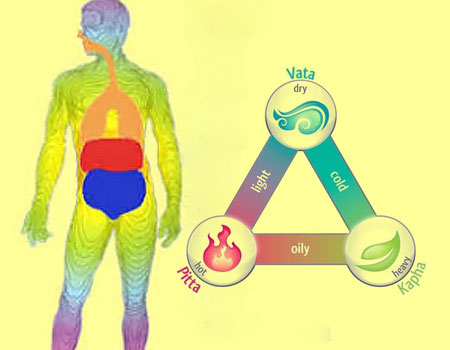 Vata, Pitta, and Kapha are the three doshas, or bio-energetic forces, according to Ayurveda, an ancient Indian system of medicine. These doshas govern various physiological and psychological functions in the body, and an imbalance in any of these doshas can lead to health problems. Ayurveda aims to restore balance to the doshas through lifestyle changes, diet, herbal remedies, and other holistic approaches.
Vata, Pitta, and Kapha are the three doshas, or bio-energetic forces, according to Ayurveda, an ancient Indian system of medicine. These doshas govern various physiological and psychological functions in the body, and an imbalance in any of these doshas can lead to health problems. Ayurveda aims to restore balance to the doshas through lifestyle changes, diet, herbal remedies, and other holistic approaches.
While homeopathy and Ayurveda are distinct systems of medicine with different principles and approaches, some homeopathic remedies may be chosen based on their correspondence to certain Ayurvedic principles or symptoms associated with imbalances in specific doshas. Here are some examples:
1. Vata Imbalance:
- Homeopathic remedies like Bryonia, Nux vomica, and Rhus toxicodendron may be considered for symptoms such as anxiety, restlessness, dry skin, constipation, and joint stiffness, which are associated with excess Vata.
- Additionally, lifestyle modifications such as establishing a regular routine, consuming warm, nourishing foods, practicing grounding activities like yoga or meditation, and getting adequate rest can help balance Vata.
2. Pitta Imbalance:
- Homeopathic remedies such as Arsenicum album, Belladonna, and Pulsatilla may be used for symptoms like irritability, inflammation, acid reflux, skin rashes, and diarrhea, which are indicative of excess Pitta.
- Dietary changes such as avoiding spicy and acidic foods, staying hydrated, and incorporating cooling foods like cucumber and coconut into the diet can help pacify Pitta.
3. Kapha Imbalance:
- Homeopathic remedies like Kali carbonicum, Natrum muriaticum, and Calcarea carbonica may be considered for symptoms such as lethargy, congestion, weight gain, sinus issues, and excess mucus production, which are associated with Kapha imbalance.
- Lifestyle modifications such as engaging in regular exercise, consuming warm, light foods, incorporating pungent and spicy flavors, and maintaining a warm and dry environment can help balance Kapha.
It's important to note that while homeopathy can offer support for symptoms associated with doshic imbalances, Ayurvedic principles focus on a broader approach to health and wellness, including diet, lifestyle, and daily routines. Therefore, individuals seeking to address doshic imbalances may benefit from integrating both homeopathic remedies and Ayurvedic practices under the guidance of qualified practitioners in each respective field.
As with any health-related concerns, it's advisable to consult with healthcare professionals who are well-versed in either homeopathy for personalized treatment recommendations tailored to individual needs and constitution.

 Vata, Pitta, and Kapha are the three doshas, or bio-energetic forces, according to Ayurveda, an ancient Indian system of medicine. These doshas govern various physiological and psychological functions in the body, and an imbalance in any of these doshas can lead to health problems. Ayurveda aims to restore balance to the doshas through lifestyle changes, diet, herbal remedies, and other holistic approaches.
Vata, Pitta, and Kapha are the three doshas, or bio-energetic forces, according to Ayurveda, an ancient Indian system of medicine. These doshas govern various physiological and psychological functions in the body, and an imbalance in any of these doshas can lead to health problems. Ayurveda aims to restore balance to the doshas through lifestyle changes, diet, herbal remedies, and other holistic approaches.